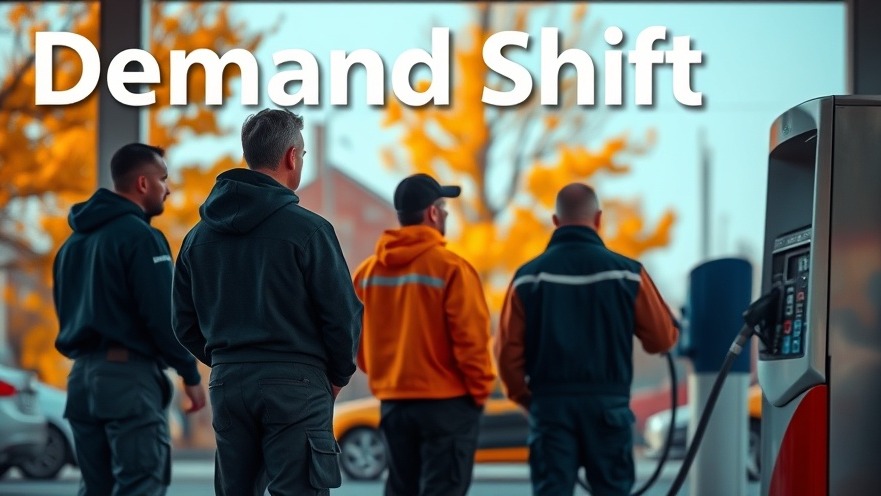
Why Gas Demand is Decreasing This Fall
As summer fades into fall, gas demand typically takes a dip, and we're seeing that trend materialize. With the national average for gasoline prices settling at around $3.19 per gallon—a slight decrease from the previous week—drivers across the country can expect some relief at the pump. The circulating trend is driven not only by seasonal adjustments but also by an oversupply of crude oil, which continues to outweigh demand.
The Impact of Seasonal Blend Changes
The switch to winter-blend gasoline is also contributing to lower prices. This variant is less costly to produce and typically helps in stabilizing prices during the colder months. For auto repair shop owners, this transition signals a shift in consumer behavior, where vehicle maintenance may become more prevalent as drivers prepare their cars for winter conditions.
Unpacking Regional Variance in Gas Prices
While the national average is falling, some regions, like the Pacific Northwest, are experiencing price spikes. For instance, prices in Washington have surged over 20 cents per gallon due to a pipeline shutdown influencing supply. During such fluctuations, it's crucial for auto repair shop owners to keep an ear to the ground regarding local fuel pricing and inventory availability to manage customer expectations better.
Oil Market Trends
Looking at the broader picture, the WTI crude oil prices rose to $63.67 a barrel, with crude oil inventory numbers also increasing. Despite this uptrend in production, the American driving population is consuming dramatically less fuel. This change can be attributed to several factors: remote work adoption, more efficient vehicles on the road, and an accelerating shift towards electric vehicles. Each of these impacts the landscape for auto repair shops addressing both gasoline and EV servicing.
Preparing for Future Trends in Fuel and Maintenance
Electric vehicle (EV) charging stations maintained a consistent rate of 36 cents per kilowatt hour across public stations. The noteworthy rise in EV adoption represents a critical trend for auto shops to consider. Not only does this signal a shift in vehicle types coming through your doors, but it also reflects changing consumer preferences, as more drivers seek out repair services that cater to hybrids and fully electric models. Repair shops that adapt to these industries will find new growth areas.
Key Statistics to Consider
Up-to-date statistics reveal the landscape of gasoline costs across the U.S., differentiating between the most and least expensive state markets. California leads the pack at $4.63 per gallon, whereas Mississippi boasts the lowest at $2.71. It's essential for businesses to recognize regional price differences and adjust their pricing and service offerings accordingly to cater to local drivers.
Strategies for Auto Repair Shops
Understanding these market shifts can greatly inform your service offerings. As prices fluctuate and drivers' preferences evolve, here are several actionable insights for auto repair shop owners:
Monitor local fuel prices and communicate transparently with customers about potential impacts on service and fuel efficiency.
Stay informed about advancements in electric vehicle technology to offer customized maintenance services.
Consider adjusting pricing strategies in response to both local gas prices and inventory availability.
Build customer loyalty through exceptional service and communication, emphasizing your shop's adaptability to changing market trends.
These strategies will not only keep your shop relevant but also enhance customer satisfaction as you navigate the future of automotive repair.
 Add Row
Add Row  Add
Add 




Write A Comment